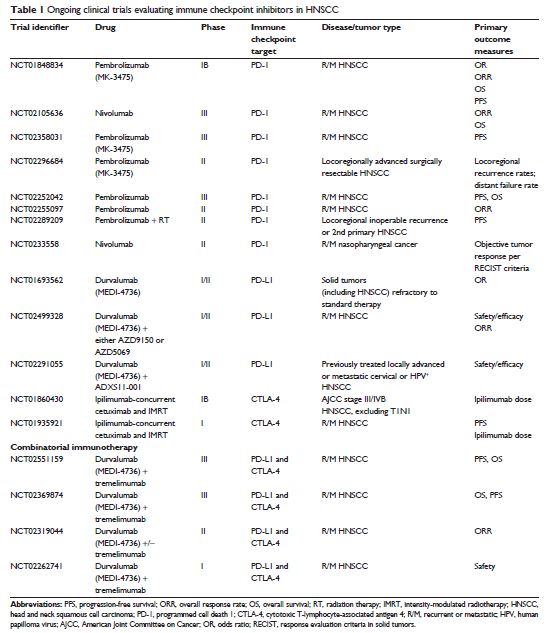9 7 8 1 6
论文已发表
注册即可获取德孚的最新动态
IF 收录期刊
- 3.3 Breast Cancer (Dove Med Press)
- 3.4 Clin Epidemiol
- 2.5 Cancer Manag Res
- 2.9 Infect Drug Resist
- 3.5 Clin Interv Aging
- 4.7 Drug Des Dev Ther
- 2.7 Int J Chronic Obstr
- 6.6 Int J Nanomed
- 2.5 Int J Women's Health
- 2.5 Neuropsych Dis Treat
- 2.7 OncoTargets Ther
- 2.0 Patient Prefer Adher
- 2.3 Ther Clin Risk Manag
- 2.5 J Pain Res
- 2.8 Diabet Metab Synd Ob
- 2.8 Psychol Res Behav Ma
- 3.0 Nat Sci Sleep
- 1.8 Pharmgenomics Pers Med
- 2.7 Risk Manag Healthc Policy
- 4.2 J Inflamm Res
- 2.1 Int J Gen Med
- 4.2 J Hepatocell Carcinoma
- 3.7 J Asthma Allergy
- 1.9 Clin Cosmet Investig Dermatol
- 2.7 J Multidiscip Healthc

头颈部鳞状细胞癌 T 细胞关卡免疫治疗进展
Authors Qi X, Jia B, Zhao X, Yu D
Received 3 August 2017
Accepted for publication 19 October 2017
Published 1 December 2017 Volume 2017:10 Pages 5745—5754
DOI https://doi.org/10.2147/OTT.S148182
Checked for plagiarism Yes
Review by Single-blind
Peer reviewers approved by Dr Colin Mak
Peer reviewer comments 2
Editor who approved publication: Dr Tohru Yamada
Abstract: Head and neck squamous cell carcinoma (HNSCC) has been found to be a
complex group of malignancies characterized by their profound immunosuppression
and high aggressiveness. In most cases of advanced HNSCC, treatment fails to
obtain total cancer cure. Efforts are needed to develop new therapeutic approaches
to improve HNSCC outcomes. In this light, T-cells “immune checkpoint” has
attracted much attention in cancer immunotherapy. It has been broadly accepted
that inhibitory T-cell immune checkpoints contribute to tumor immune escape
through negative immune regulatory signals (cytotoxic T-lymphocyte-associated
antigen 4 [CTLA-4], programmed cell death 1 [PD-1], B7-H3, and B7-H4, etc).
Current data suggest that PD-1 and CTLA-4 receptors can inhibit T-cell
receptors and T-cell proliferation. Blockade of PD-1/PD-L1 and/or CTLA-4/CD28
pathways has shown promising tumor outcomes in clinical trials for advanced
solid tumors like melanoma, renal cell cancer, and non-small cell lung cancer.
The present review attempts to explore what is known about PD-1/PD-L1 and CTLA-4/CD28
pathways with a focus on HNSCC. We further discuss how these pathways can be
manipulated with therapeutic intent.
Keywords: immune
checkpoint, PD-1/PD-L1, CTLA-4, HNSCC, immunotherapy
